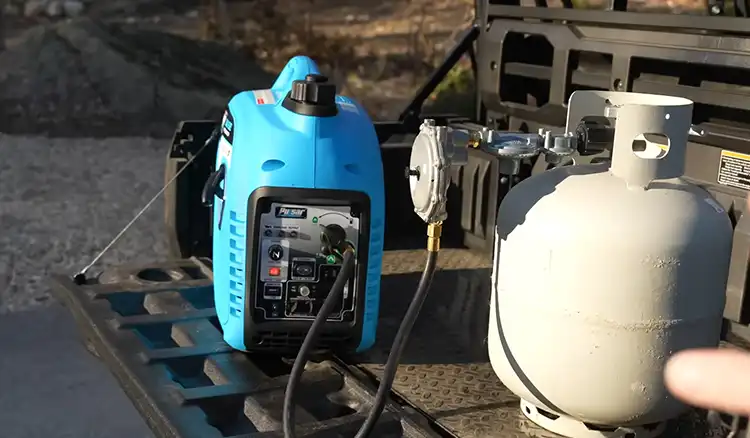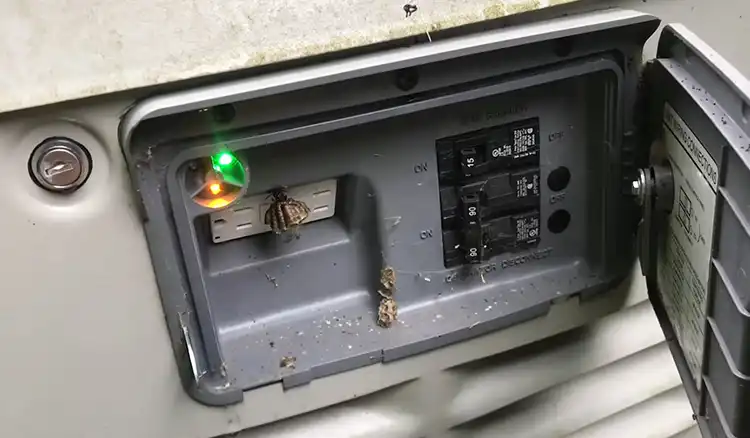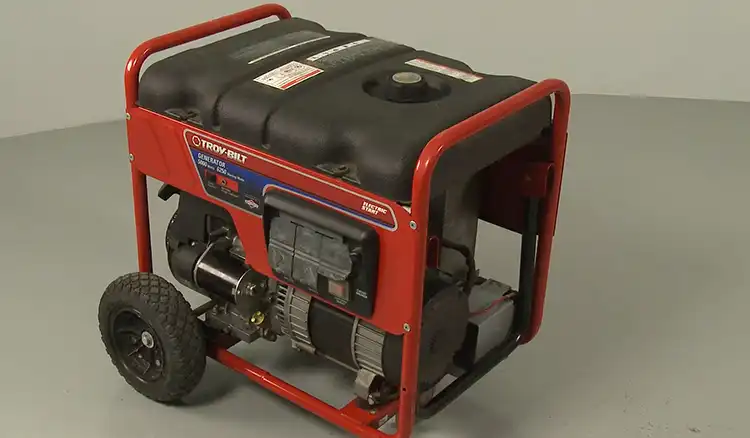Propane Generator Won’t Start | Diagnosing Why Your Generator Won’t Start
Propane generators are a popular backup power source for many households. However, just like any machine, they can fail to start when needed due to common issues like bad fuel, weak battery, or faulty ignition system. Nothing is more frustrating than pulling your generator’s start cord only to have nothing happen!
The good news is that with regular maintenance and by troubleshooting a few key generator components, those no-start issues can usually be quickly resolved. Getting your generator running again swiftly is critical to providing uninterrupted backup power during outages.
In this article, I’ll explore the usual issues behind propane generator failure to start and provide tips to get you back up and running. With a bit of preventive care and knowledge of basic troubleshooting steps, you can have confidence your generator will start when you need it most. Read on to learn how to diagnose and fix common propane generator starting problems.

Common Causes for Propane Generator Fail to Start
Out of Fuel
The most obvious issue that can prevent a propane generator from starting is simply running out of propane in the fuel tank. Propane generators require an ongoing supply of propane to operate, so confirming you have adequate fuel is the first step in any diagnosis.
There are a couple ways to check your propane level:
a. Use the fuel gauge on the tank- Most propane tanks have a built-in fuel gauge that displays the percentage of propane remaining. If the gauge shows your tank is empty, it needs to be refilled or exchanged for a full tank.
b. Weigh the tank- If your tank doesn’t have a fuel gauge, weigh the tank to estimate how full it is. A standard 20 lb propane tank weighs about 38 lbs when full and 18 lbs when empty. Compare the actual weight to the expected full weight to determine if you’re low on fuel.
If you confirm that your propane tank is out of fuel, the fix is straightforward – refill or exchange the tank and reconnect it properly to your generator. Make sure to open any shut-off valves on the fuel line so propane can flow into the engine. With a fresh propane supply reaching the engine, your generator should start up without issue.
Faulty Spark Plug
The spark plug in your propane generator engine plays a critical role in igniting the air-fuel mixture to produce combustion and power. A worn out or fouled spark plug can prevent this ignition, leading to a no-start condition.
There are a few indicators of spark plug problems:
- Difficulty starting the engine
- Rough idle or misfiring
- Loss of power
- Increased fuel consumption
Inspecting and replacing the spark plug is an easy and inexpensive fix:
– Remove the old spark plug and check for excessive wear or carbon/oil fouling. The electrode at the end should be intact without corrosion.
– Replace with the manufacturer recommended spark plug type and gap (e.g. 0.030 inches). Do not overtighten during installation.
– With the fresh spark plug properly gapped, the engine should fire up more easily.
Replacing the spark plug annually or after heavy use ensures optimal performance. Keep extras on hand for quick replacement in the field if needed.
Battery Problems
The battery in your propane generator serves the vital purpose of turning over the starter motor and providing initial ignition power. If the battery is weak or dead, the starter won’t have enough power to turn on the engine.
Some signs your generator battery is having issues:
– Starter turning over slowly or not at all
– Lights dimming when trying to start
– Corroded or loose connections
Solutions include:
– Recharging or replacing the battery if low voltage is suspected
– Cleaning any corrosion on the battery terminals
– Tightening cables to ensure solid connections
Testing the battery under load with a voltmeter can identify if it needs to be recharged or replaced. Most generators recommend a 12V battery with at least 450 cold-cranking amps. Maintaining the battery according to manufacturer guidelines will help prevent no-start situations.
Stale Fuel
Just as gasoline can go bad when stored too long, propane can also degrade in quality and make it unsuitable for engine ignition. The components of propane that aid ignition tend to evaporate over time, leaving fuel that is harder to light. Stale fuel is more likely an issue if the generator has been unused for many months.
Signs of potential stale propane:
– Generator cranks but won’t start
– Rough running when engine initially starts
– Fuel smell near tank and engine
The remedy requires completely cycling out the old propane:
– Drain stale fuel from the tank into an approved container. This may require running the engine until empty.
– Refill the propane tank with fresh fuel from a reputable supplier.
– Priming the carburetor and fuel lines will help displace any remaining stale propane.
– After cycling in new fuel, attempt starting the generator. Fresh propane should allow proper ignition.
Prevent stale fuel issues by adding propane stabilizer to tanks during long term storage and avoiding overfilling.
Clogged Fuel Filter
The fuel filter is an often overlooked but critical component. It screens out contaminants from the propane to prevent debris from entering the carburetor and engine. Over time, dirt, gunk, and rust can accumulate in the filter and restrict fuel flow. Without adequate fuel, the engine won’t start.
Warning signs of a clogged filter:
– Hard starting or stalling shortly after starting
– Reduced power output
– Higher than normal fuel consumption
Inspecting and replacing a fouled fuel filter is easy:
– Locate the fuel filter along the propane line near the engine.
– If very dirty, replace it with a new filter to restore fuel flow.
– Tighten fittings properly to avoid leaks.
For preventive maintenance, proactively replace the fuel filter every season or at least once a year. Having spare filters on hand lets you get the generator running again quickly.
Faulty Fuel Solenoid
Propane generators utilize a fuel solenoid valve to control the flow of propane from the tank to the engine. The fuel solenoid opens and closes in response to the ignition sequence, allowing fuel to flow when the starter is engaged. If the fuel solenoid fails, it won’t open and will block fuel from reaching the engine.
Signs of a faulty solenoid valve:
– Starter engages but engine doesn’t fire
– No fuel smell when trying to start
– Malfunction indicator lights related to fuel system
If you suspect the fuel solenoid, solutions include:
– Listen for an audible click when the starter is engaged – no click indicates a bad solenoid.
– Tap on the solenoid with a wrench while engaging the starter. The vibration can temporarily reseat the solenoid.
– Replace the fuel solenoid valve if faulty, using manufacturer specifications for part numbers and pressure rating.
Routine inspection of propane lines and valves can help identify issues before they lead to failure. Keep spare solenoids in stock for urgent replacement when needed.
Tripped Low Oil Sensor
Propane generators have built-in low oil sensors to protect the engine from damage if oil levels run too low. When tripped, this sensor automatically shuts down the engine and prevents it from being restarted until the oil is refilled. Low oil can be caused by leaks or failing to maintain the oil level.
Signs of tripped low oil sensor:
– Engine kills shortly after starting up
– Indicator light showing low oil pressure/level
– Oil level on dipstick being very low
To reset the low oil sensor:
– Add oil to reach proper level per manufacturer specification
– Reset the sensor by briefly disconnecting battery
– Sensor should allow restarting now that oil is at safe level
Routinely checking the oil level and addressing any leaks will help avoid disruptive low oil shutdowns. Keep extra oil on hand for top-offs.
Troubleshooting Guide for Propane Generator Won’t Start
If your propane generator fails to start, methodically working through focused troubleshooting steps can help promptly identify and resolve the issue. Use the guide below to check the critical components and determine the cause systematically.
Step-01: Fuel Supply
Fuel issues are the most common reason for failure to start, so begin by confirming fuel is reaching the engine.
1. Check Propane Tank Level– Ensure an adequate propane supply in the tank using a gauge or weight check. Refill if empty.
2. Inspect Fuel Lines and Valves– Look for cracks/leaks and listen for gas flow when the starter is engaged. Tighten fittings or replace damaged parts as needed.
3. Open Fuel Valve– Make sure the fuel shut-off valve between tank and engine is fully open to allow fuel flow.
If fuel supply components check out, move on to the next likely issues.
Step-02: Battery Inspection
An inadequate battery can cause all kinds of starting troubles. Verify battery condition next.
1. Check Battery Voltage– Use a multimeter to measure voltage with the engine off and while starting. Look for low voltage readings.
2. Inspect Terminals and Cables– Check for loose, corroded or damaged terminals and cables. Clean or replace as necessary.
3. Load Test Battery– Use a battery tester to simulate load. Weak batteries will show voltage drop. Replace if faulty.
4. Recharge or Replace Battery– As required to restore full cranking power for starter.
Step-03: Evaluate Ignition System
Problems with ignition components will prevent firing the spark plug.
1. Inspect Spark Plug– Remove and check the spark plug. Replace if fouled, damaged or overdue for replacement.
2. Verify Spark– Use spark tester tool to check for spark while cranking engine. No spark indicates ignition problem.
3. Check Ignition Wires– Inspect wires for cracking, loose connections, or damage. Replace faulty wires.
4. Test/Replace Ignition Modules– Substitute known good modules to isolate failure. Replace faulty ignition control modules.
Step-04: Check Fuel Delivery Path
Restrictions in the fuel delivery path will starve the engine of propane.
1. Replace Fuel Filter– Clogged filters are a common failure point. Install new filter.
2. Inspect Fuel Pump– Listen for pump hum. Replace pump if faulty or weak.
3. Check Carburetor– Remove air filter and spray starting fluid into the carburetor. If the engine starts, the carburetor is likely clogged and needs cleaning or rebuilding.
4. Check for Blockages– Examine fuel lines, filters, pumps for debris clogging fuel delivery.
Step-05: Evaluate Engine Compression
Lack of compression makes starting difficult. This usually indicates deeper engine issues.
1. Do Compression Test – Use compression tester gauge to measure cylinder compression with engine cranking.
2. Inspect Valves– Low compression can be caused by valve issues. Adjust or replace damaged valves and seats if needed.
3. Check Cylinder Head Gasket– Blown head gasket allows compression leaks. Replace gasket to restore sealing.
4. Examine Piston Rings– Worn piston rings around cylinders reduces compression. Overhaul top end of engine or replace piston rings.
Step-06: Confirm Mechanical Movement
Binding in moving components will keep the engine from turning over.
1. Check Starter– Listen for grinding or sluggish cranking. Replace starter motor if damaged.
2. Test Alternator– Rule out seized alternator bearings preventing cranking. Replace alternator if necessary.
3. Inspect Flywheel– Remove debris or replace the flywheel if damaged.
4. Check for Locked Crankshaft– Free up seized crankshaft. May require engine disassembly to access.
Step-07: Evaluate Safety Shut-Off Issues
Built-in generator protection features may be activating and causing shutdown.
1. Reset Low Oil Sensor– Add oil if needed and reset the sensor. Rule out low oil auto-shutdown.
2. Inspect Overload Circuit Breaker– Reset breaker if tripped. Check for short circuits in wiring.
3. Check Safety Switch Contacts– Clean or replace faulty voltage regulator or wiring harness.
4. Replace Faulty Sensors– Swap any suspect oil pressure, voltage or temperature sensors that may be providing false readings and triggering shutdown.
By methodically working through these troubleshooting steps, you can zero in on the specific issue plaguing your generator. Fixing the problem will have you back in business with reliable backup power.
Common Preventive Maintenance Tips
While troubleshooting remedies problems after they occur, a regimen of preventive maintenance helps avoid issues in the first place. Here are some key generator maintenance tips to keep your unit starting reliably:
Follow Regular Maintenance Schedule
– Adhere to the manufacturer’s guidelines for maintenance intervals on oil changes, oil filter changes, spark plug replacement, battery recharge, etc.
– Mark your maintenance schedule on a calendar and set reminders for required upkeep.
– Keep detailed logs of maintenance performed.
Proper Storage Procedures
– Allow the engine to cool fully before storing the generator after use.
– Drain fuel or add fuel stabilizer to prevent stale fuel issues.
– Clean exterior and interior of generator. Remove debris and dirt buildup.
– Store generator in a dry, covered area protected from weather and pests.
– Use appropriate tie downs if storing generators on a trailer or truck.
Periodic Testing
– Start and run generators at least monthly. Let it run at least 30 minutes under a partial load.
– Check for leaks, noises, temperature changes that indicate maintenance is needed.
– Keeping the generator exercised helps prevent corrosion and stale fuel buildup.
Staying proactive with maintenance goes a long way to extending the service life of your generator and provides backup power confidence when you need it most.
Questions & Answers (Q&A)
1. Why does my propane generator turn over but won’t start?
The most common causes for a generator with starter engagement but failure to ignite are stale fuel, clogged fuel filter, faulty spark plug, or ignition system issues. Check those items first.
2. How can I tell if my generator battery is bad?
Check for corroded terminals, test battery voltage under load, and measure cranking performance. If voltage is low or cranking is slow, battery replacement is likely needed.
3. What should I do if my generator won’t stay running?
Frequent stalling after start can indicate problems like bad fuel, clogged carburetor, low oil shutdown, or ignition failure. Troubleshoot each of those causes systematically to identify the issue.
4. Why does my generator sputter and run rough?
Dirty fuel filters, stale propane, improperly gapped spark plugs, and carburetor issues can lead to sputtering and rough operation. Inspect and remedy those components.
5. How often should I run my propane generator?
Experts recommend exercising your generator at least monthly by running it for 30 minutes under a partial load. This prevents issues from stale fuel and drying gaskets/seals.
6. Can bad propane cause generator starting problems?
Yes, degraded or contaminated propane can lead to hard starting and ignition misfires. Drain old propane completely and replace with fresh fuel to resolve.
7. What maintenance should be done on a propane generator?
Check oil, air filters, spark plugs regularly. Change oil and filters based on operating hours. Inspect fuel lines and valves for leaks. Keep the battery charged. Follow all manufacturer maintenance guidelines.
8. How do I check for spark on my generator?
Use an inexpensive spark tester tool. Clip it to the spark plug wire, crank the engine, and check for a bright blue spark flash indicating proper ignition voltage.
End Notes
Having a propane generator fail to start when an outage occurs can make an already stressful situation even more difficult. While frustrating, most starting issues can be traced to a few common causes like fuel supply problems, battery failure, faulty spark plugs, and stale propane. Following a systematic troubleshooting approach helps pinpoint the specific problem. Remedying issues quickly gets your generator running again so it provides peace of mind when you need it. Implementing preventive maintenance extends your generator’s service life and provides reliable power for years to come.
![[100% Working] Generac Generator Clicks But Won’t Start](https://generatorwheel.com/wp-content/uploads/2023/03/Generac-Generator-Clicks-but-Wont-Start-768x431.webp)

![[9 Fixes] Honda Generator Keeps Shutting Off](https://generatorwheel.com/wp-content/uploads/2023/06/Honda-Generator-Keeps-Shutting-Off-768x431.webp)


![[100% Working] Champion Generator Electric Start Not Working](https://generatorwheel.com/wp-content/uploads/2023/03/Champion-Generator-Electric-Start-Not-Working-768x431.webp)